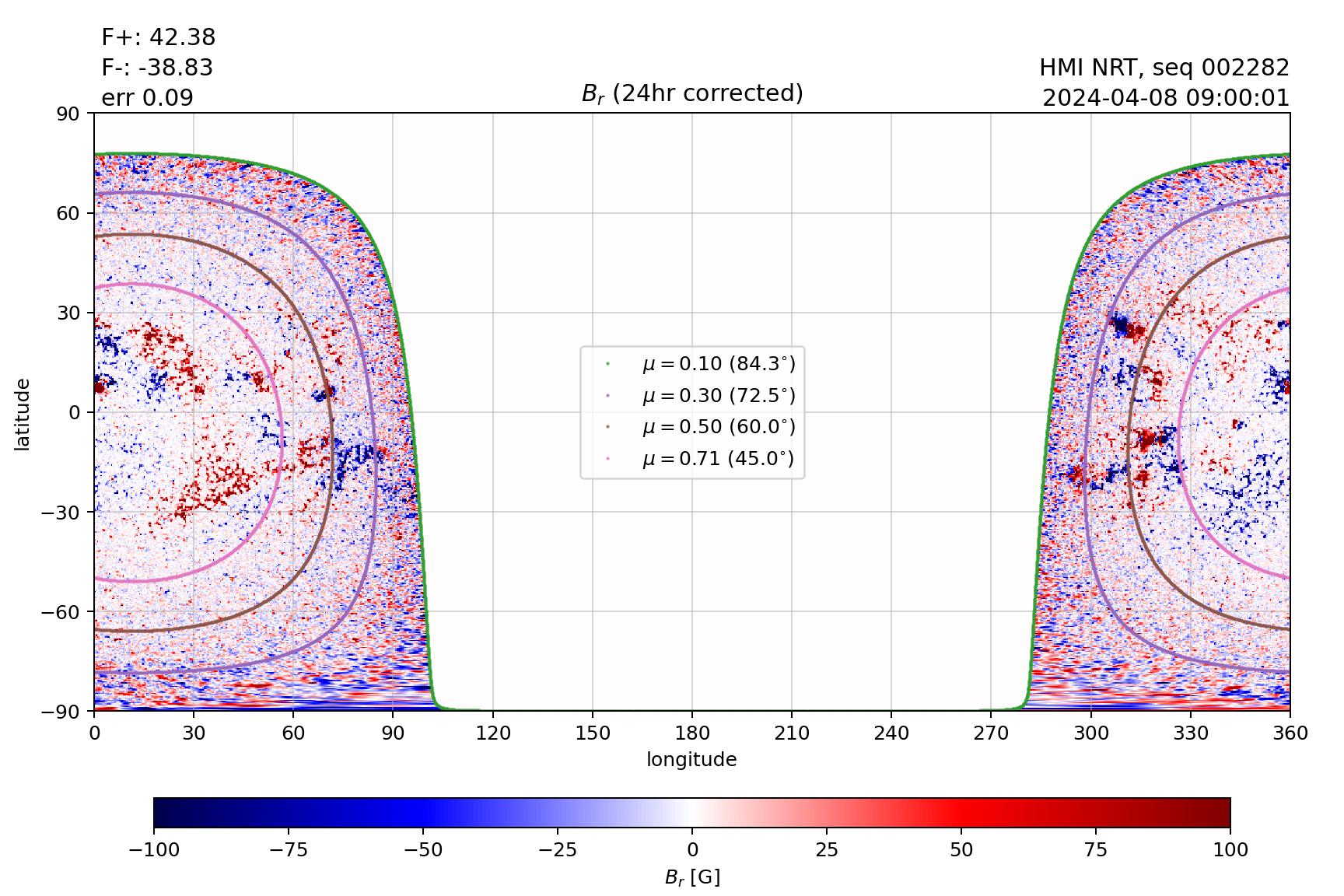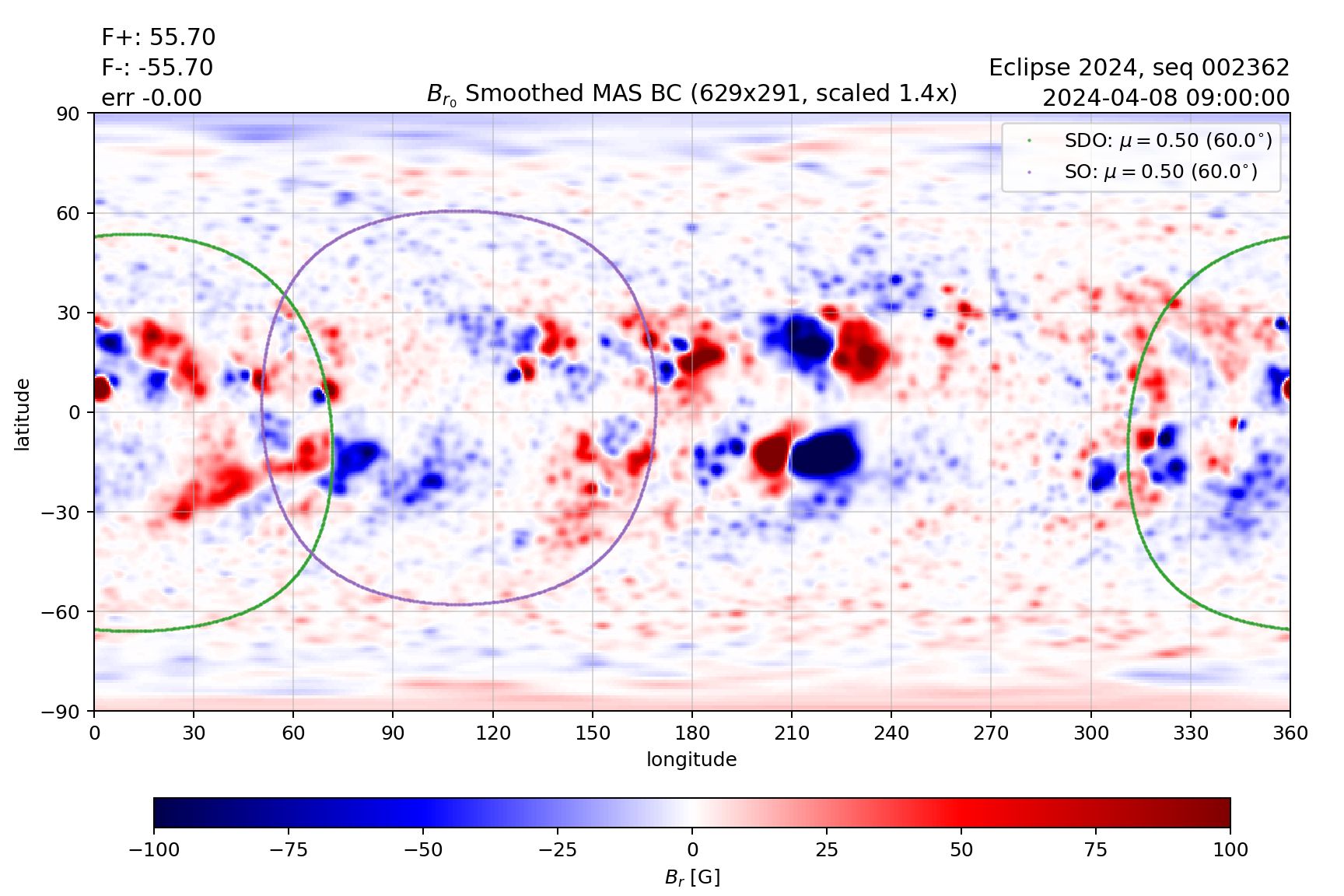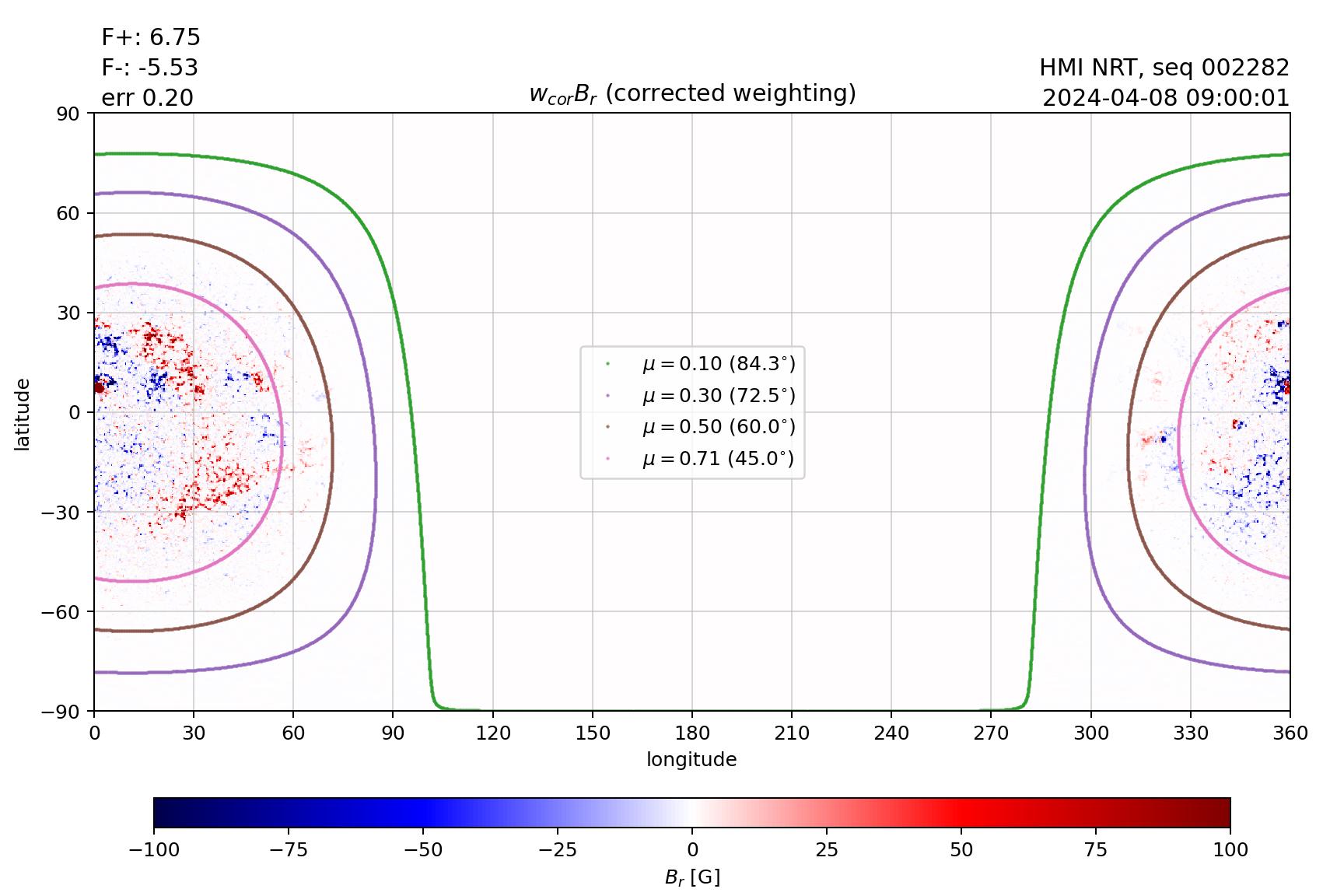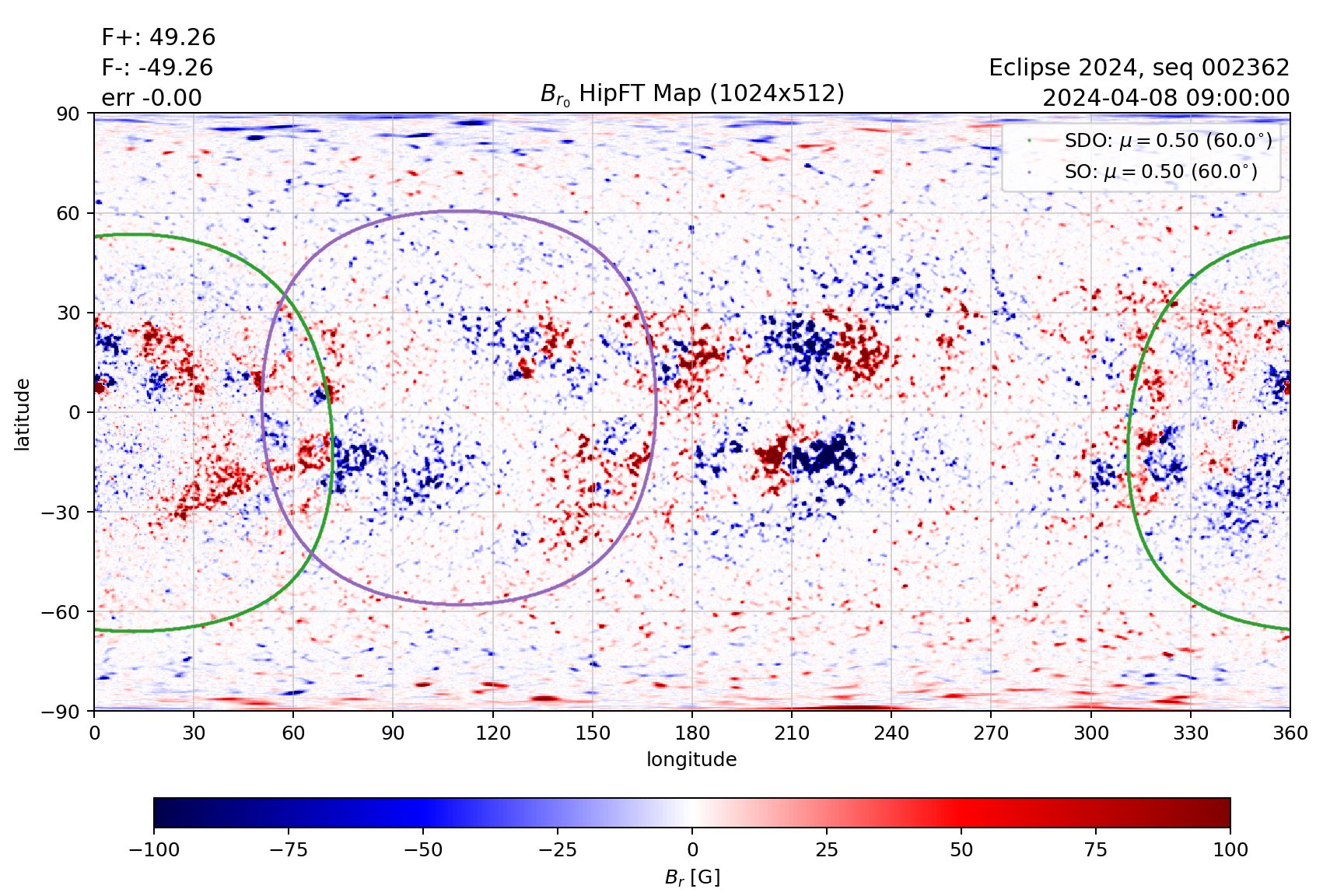Data from latest HMI Magnetogram, to be assimilated
(With angular distance from disk center)
Magnetic boundary condition for the MHD code MAS, derived from HipFT
(SDO assimilation region plus later SO view and assimilated regions are indicated)
Maps of the photospheric magnetic field are the key boundary condition for the model. In past predictions, we used maps built up over a solar rotation, which give a good approximation of the Sun's magnetic flux if the large-scale flux does not change much throughout a solar rotation. During this time in the solar cycle, the flux can evolve rapidly. The processes by which the magnetic flux on the Sun evolves have been studied for many years. Surface flux transport (SFT) models incorporate these processes, and can, in principle, provide a more accurate picture of the solar magnetic flux at a given time. We are using HipFT, a new SFT to assimilate and evolve the solar magnetic flux to create the boundary maps used in the model. The primary data source is Br deduced from the line-of-sight component (LOS) of the photospheric magnetic field, measured by the HMI magnetograph on the NASA SDO spacecraft.
A difficulty with real-time assimilation is that artifacts can easily be introduced into the SFT. A common example is when only a portion of an active region is observed, such that one polarity is unbalanced. We mitigate this issue with a flux-balanced weighting that reduces the input of any unbalanced polarity. We ensure that the weighted, assimilated data does not change the flux balance of the map, ensuring that a net flux of zero is maintained for the entire map.



